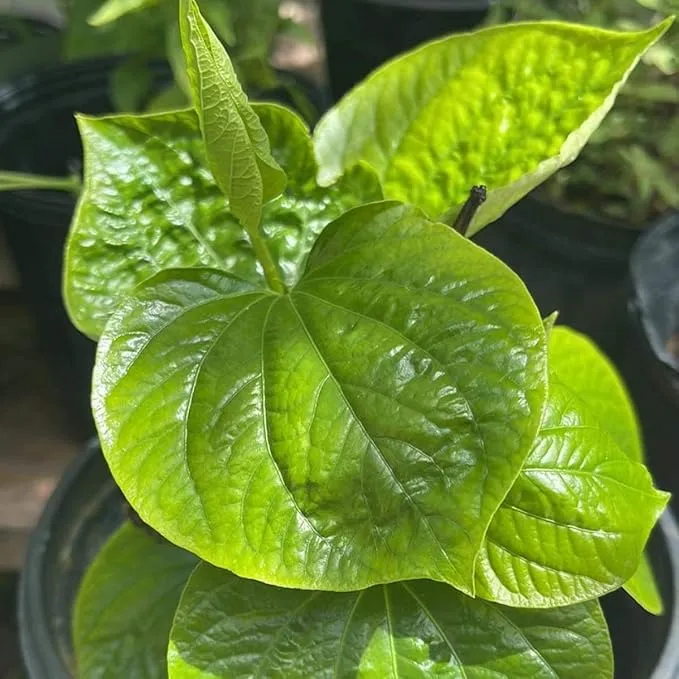Betel Leaf (Paan) Care
The betel leaf paan plant, scientifically known as Piper betle, is a tropical vine belonging to the Piperaceae family. It is widely cultivated in many Asian countries for its heart-shaped, glossy green leaves, which are traditionally used to wrap a mixture of areca nut, lime, and spices, known as paan. Betel leaf is not only valued for its culinary uses but also for its cultural significance, often featured in rituals and social gatherings. The plant thrives in warm, humid environments and can grow in a variety of soils, making it a popular choice for home gardens and commercial cultivation. Beyond its culinary appeal, betel leaves are known for their medicinal properties, including antimicrobial and antioxidant effects.

How to care for your Betel Leaf
- LIGHT
Betel leaf plants prefer bright, indirect sunlight. While they can tolerate partial shade, too much direct sunlight can scorch the leaves. Ideal conditions mimic the dappled light found under larger trees.
- WATER
Keep the soil consistently moist but not waterlogged. Water the plant when the top inch of soil feels dry. Avoid letting the plant sit in standing water, as this can lead to root rot.
- HUMIDITY
These plants thrive in high humidity. Aim for 60% or higher; if your home is dry, consider using a humidifier or placing a tray of water near the plant to increase moisture in the air.
- TEMPERATURE
Betel leaf plants prefer warm temperatures, ideally between 25°C to 30°C (77°F to 86°F). They should be protected from cold drafts and temperatures below 15°C (59°F).
- FOOD
Fertilize every 4-6 weeks during the growing season (spring and summer) with a balanced liquid fertilizer. Reduce feeding in fall and winter when the plant’s growth slows.
- TOXICITY
Betel leaf is generally considered safe for handling and consumption. However, excessive consumption of betel leaves, especially when combined with areca nut, can have health risks. Always consult a healthcare professional if unsure.
- ADDITIONAL CARE
Regularly prune your betel leaf plant to encourage bushier growth and remove any yellowing or damaged leaves. Monitor for pests such as aphids or spider mites, and treat infestations promptly with insecticidal soap or neem oil.
Common Issues for your Betel Leaf
Check the soil moisture; if it’s too wet, reduce watering and allow the soil to dry slightly before the next watering. Additionally, ensure the plant receives adequate nutrients by fertilizing with a balanced liquid fertilizer every 4-6 weeks during the growing season.
Assess the soil moisture to determine if it’s too dry. If the soil feels dry, give the plant a thorough watering. If the plant is exposed to extreme heat, consider relocating it to a spot with filtered light or more shade to help it recover.
Maintain stable environmental conditions by avoiding drafts and sudden temperature changes. Ensure the plant is in an area with consistent humidity and temperature, ideally between 25°C to 30°C (77°F to 86°F), and consider using a humidifier if your home is dry.
